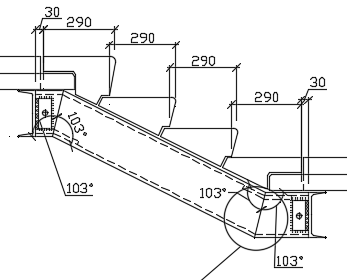
Uzel Krepleniya Sotovogo Polikarbonata Dwg
Reshebnik po sborniku zadachi po fizike 10 klass zhilko markovich 2003 full. Jonn2 さん 2012年 10月 25日 12時 49分 10秒.
Golden Ratio in Art and Architecture Golden Ratio in Art and Architecture By Samuel Obara According to NCTM's Principles and Standard for School Mathematics(2000), rich problems contexts involve connections to other disciplines, (e.g. Science, social studies, art) as well as to the real world and to the daily life experience of middle-grades students(NCTM, 2000, p.374). An exploration with the golden ratio offers opportunities to connect an understanding the conceptions of ratio and proportion to geometry. The mathematical connections between geometry and algebra can be highlighted by connecting Phi to the Fibonacci numbers and some golden figures. Also, the golden ratio is a good topic to introduce historic and aesthetic elements to a mathematical concept, because we can find that not a few artists and architects were connected with the golden ratio of their works through much of the art history. The one of purposes of this project is to overview the golden ratio briefly.
The other is to introduce the occurrences of the golden ratio in art and architecture. The content includes the following: I.A discovery of the Golden Ratio A.

A brief history of the Golden Ratio B. Definitions of the Golden Ratio related to Fibonacci sequence number II. Some Golden Geometry III. The Golden Ratio in Art and Architecture IV. A discove ry of Golden Ratio A. A brief history of Golden Ratio There are many different names for the golden ratio; The Golden Mean, Phi, the Divine Section, The Golden Cut, The Golden Proportion, The Divine Proportion, and tau(t).
The Great Pyramid of Giza built around 2560 BC is one of the earliest examples of the use of the golden ratio. The length of each side of the base is 756 feet, and the height is 481 feet. So, we can find that the ratio of the vase to height is 756/481=1.5717. The Rhind Papyrus of about 1650 BC includes the solution to some problems about pyramids, but it does not mention anything about the golden ratio Phi. Euclid (365BC - 300BC) in his 'Elements' calls dividing a line at the 0.6180399.
Point dividing a line in the extreme and mean ratio. This later gave rise to the name Golden Mean. He used this phrase to mean the ratio of the smaller part of this line, GB to the larger part AG (GB/AG) is the same as the ratio of the larger part, AG, to the whole line AB (AG/AB).Then the definition means that GB/AG = AG/AB. proposition 30 in book VI Plato, a Greek philosopher theorised about the Golden Ratio. He believed that if a line was divided into two unequal segments so that the smaller segment was related to the larger in the same way that the larger segment was related to the whole, what would result would be a special proportional relationship. Luca Pacioli wrote a book called De Divina Proportione (The Divine Proportion) in 1509.
It contains drawings made by Leonardo da Vinci of the 5 Platonic solids. Leonardo Da Vinci first called it the sectio aurea (Latin for the golden section). Today, mathematicians also use the initial letter of the Greek Phidias who used the golden ratio in his sculptures. Definitions of Golden Ratio 1 ) Numeric definition Here is a 'Fibonacci series'. 0, 1, 1, 2, 3, 5, 8, 13, 21, 34, 55, 89, 144,. If we take the ratio of two successive numbers in this series and divide each by the number before it, we will find the following series of numbers.
1/1 = 1 2/1 = 2 3/2 = 1.5 5/3 = 1.6666. 8/5 = 1.6 13/8 = 1.625 21/13 = 1.61538. 34/21 = 1.61904. The ratio seems to be settling down to a particular value, which we call the golden ratio(Phi=1.618.). 2) Geometric definition We can notice if we have a 1 by 1 square and add a square with side lengths equal to the length longer rectangle side, then what remains is another golden rectangle.
This could go on forever. We can get bigger and bigger golden rectangles, adding off these big squares. Step 1 Start with a square 1 by 1 Step 2 Find the longer side Step 3 Add another square of that side to whole thing Here is the list we can get adding the square; 1 x 1, 2 x 1, 3 x 2, 5 x 3, 8 x 5, 13 x 8, 21 x 13, 34 x 21. With each addition coming ever closer to multiplying by Phi.
Start 1 by 1, add 1 by 1 => Now, it is 2 by 1, add 2 by 2 Now, it is 3 by 2, add 3 by 3 => Now, it is 5 by 3, add 5 by 5 Now, it is 8 by 5. 3) Algebraic and Geometric definition We can realize that Phi + 1 = Phi * Phi. Start with a golden rectangle with a short side one unit long. Since the long side of a golden rectangle equals the short side multiplied by Phi, the long side of the new rectangle is 1*Phi = Phi. If we swing the long side to make a new golden rectangle, the short side of the new rectangle is Phi and the long side is Phi * Phi.